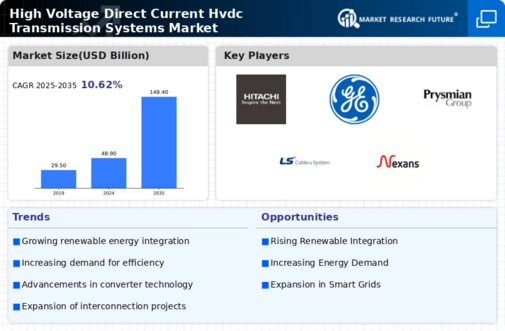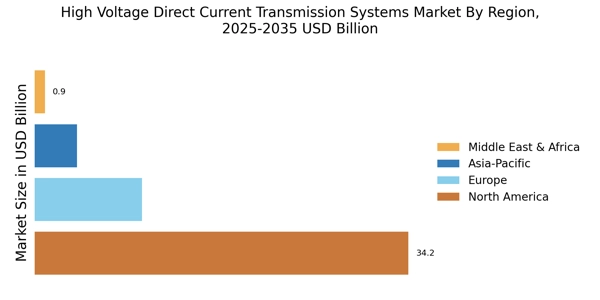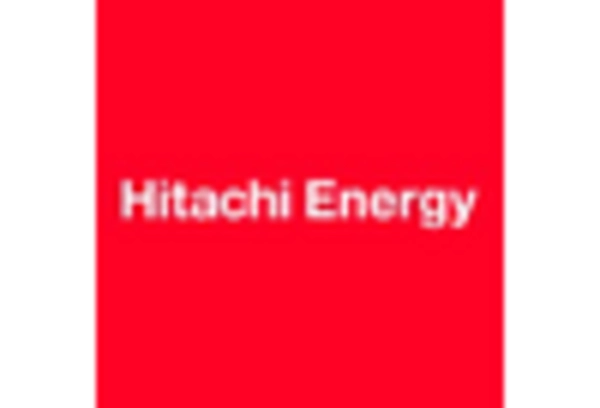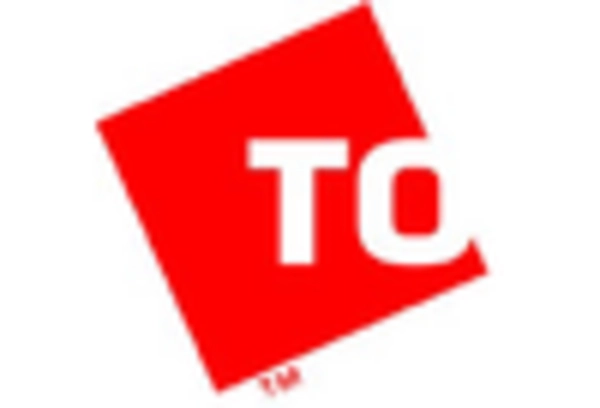Expansion of Interconnected Grids
The expansion of interconnected grids is a crucial factor driving the High Voltage Direct Current Hvdc Transmission Systems Market. As nations seek to enhance energy security and reliability, the interconnection of regional grids becomes increasingly important. HVDC systems facilitate the transfer of electricity over long distances with minimal losses, making them ideal for connecting disparate energy markets. In recent years, several major HVDC projects have been initiated, including the North Sea Wind Power Hub, which aims to connect multiple countries through a shared HVDC network. This trend is expected to continue, with investments in HVDC infrastructure projected to reach USD 20 billion by 2026. The ability of HVDC systems to support large-scale energy exchanges and improve grid resilience is likely to drive their adoption in interconnected grid projects.
Government Initiatives and Policies
Government initiatives and policies aimed at promoting clean energy and reducing greenhouse gas emissions are significantly impacting the High Voltage Direct Current Hvdc Transmission Systems Market. Many governments are implementing regulations and incentives to encourage the adoption of HVDC technology as part of their energy transition strategies. For instance, various countries have set ambitious targets for renewable energy deployment, which necessitates the use of efficient transmission systems like HVDC. In 2023, investments in HVDC projects were supported by government funding, amounting to approximately USD 5 billion. These initiatives not only facilitate the development of HVDC infrastructure but also create a favorable environment for private sector investments. As policies continue to evolve, the HVDC market is likely to benefit from increased governmental support and funding.
Integration of Renewable Energy Sources
The increasing integration of renewable energy sources, such as wind and solar, into the energy mix is a primary driver for the High Voltage Direct Current Hvdc Transmission Systems Market. As countries strive to meet ambitious carbon reduction targets, the demand for efficient transmission systems that can handle the variable nature of renewable energy becomes critical. HVDC technology offers advantages in long-distance transmission, reducing losses and enhancing grid stability. In 2023, the share of renewables in the energy mix reached approximately 30%, and this trend is expected to continue, further propelling the HVDC market. The ability of HVDC systems to connect remote renewable generation sites to urban load centers is likely to enhance their adoption, making them indispensable in the transition to a sustainable energy future.
Technological Advancements in HVDC Systems
Technological advancements in High Voltage Direct Current Hvdc Transmission Systems Market are significantly influencing the market landscape. Innovations such as voltage source converters (VSC) and improved control systems are enhancing the efficiency and reliability of HVDC systems. These advancements allow for better integration of renewable energy sources and facilitate the interconnection of asynchronous grids. The market for HVDC technology is projected to grow at a compound annual growth rate (CAGR) of around 8% from 2025 to 2030, driven by these technological improvements. Furthermore, the development of modular multilevel converters (MMC) is enabling more flexible and scalable HVDC solutions, which are likely to attract investments and drive market growth. As the industry evolves, these technological enhancements are expected to play a pivotal role in shaping the future of the HVDC market.
Rising Demand for Efficient Power Transmission
The rising demand for efficient power transmission is a key driver for the High Voltage Direct Current Hvdc Transmission Systems Market. As urbanization and industrialization continue to accelerate, the need for reliable and efficient electricity transmission becomes paramount. HVDC technology offers several advantages over traditional AC systems, including lower transmission losses and the ability to transmit power over longer distances. In 2023, the global demand for electricity increased by approximately 4%, further highlighting the need for advanced transmission solutions. Additionally, the growing focus on reducing carbon footprints and enhancing energy efficiency is likely to drive investments in HVDC systems. As the energy landscape evolves, the demand for efficient power transmission solutions is expected to remain strong, positioning HVDC technology as a preferred choice for future energy infrastructure.


















Leave a Comment